Gravel From The Ground Up: Geometry 101

I've maintained for a long time that triathletes need a road bike as a training tool. The fundamental argument that I've made is that whenever you are not riding your tri bike in the aerobars, you'd be better served to be riding a road bike. This because a road bike in the standard position is closer to the TT position than the tri bike is when on the brakes. This because the steep seat angle of the TT bike means that when you are riding around in the "road" position on your TT bike, your hip angle is too open.
I've since modified my thinking slightly. I still think triathletes need a second bike for those same reasons. But rather than a road bike, I think triathletes ought to get an all-road bike. AKA, a gravel bike. This is because a gravel bike can fill all the roles of a road bike, but it also opens up a lot more terrain – particularly in the offseason when roads may be impassable due to weather, and – most critically – off-road riding introduces elements of bike-handling that I think are valuable over and above the position-based benefits of riding a road bike. Simply put, riding a gravel bike will make you a better all-around bike rider than riding a road bike will.
Gravel bikes are – essentially – a sub-set of both road bikes and mountain bikes. And what exactly is meant by a "gravel" bike can vary widely. Some gravel bikes skew more towards mountain bikes – they are primarily meant for off-road riding. And some are basically just road bikes that can take wider tires (at least 38mm). Tire clearance is a bigger issue than it might seem at first glance. In the first article in this series, I made the case that tire choice and tire pressure are the single most important factor for "all-road" riding. The second most important factor is geometry. Specifically, front-end geometry. In this case, I'm not talking about how a bike fits – or should fit. That's a separate discussion. What I'm talking about here is how a bike handles.
A Quick Geometry Primer: Trail & Front-Center
Before we delve any deeper, I want to cover the two fundamental aspects of bicycle geometry with regards to handling. They are trail – which is the horizontal distance between the contact patch of the front wheel and the projection of the steering axis to the ground – and front-center – the straight-line distance between the bottom-bracket and the front-axle. Both are best explained visually.
Trail is defined by fork rake (also called offset) and head-tube angle. Bikes with more trail prefer to go in a straight line. They are either "sluggish" or "stable" depending on your preferences. Trail – so called because the contact patch of the tire trails behind the steering axis – is also sometimes called caster. The Wikipedia page on bicycle and motorcycle handling is a great resource that goes very in-depth on both trail and mechanical trail if you want to get into the details (though there's still a lot unknown in terms of why, exactly, trail impacts handling the way it does).
One thing to note here in reference to the first article: larger tires will increase trail. This is important because very small differences in trail make a big difference on handling. So the change in trail between 38mm and 44mm tires is significant. The larger the tire, the greater the trail. Which is a good thing. Because when you put skinny road tires on your gravel bike, you'll push it to handle more like a road bike. And when you put fat tires on, it'll handle more like a trail bike. This is because trail is "foot" of the triangle, which grows as the "point" of the triangle moves up, which is what happens as you put bigger tires on.
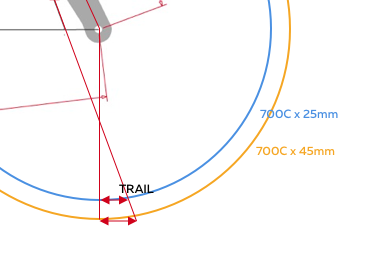
Given the wide range of tires you can fit on a gravel bike, the actual change in trail between, say, 25mm road tires and 45mm gravel tires can be quite significant. For a bike with a fairly standard 72deg head-tube angle running 700C wheels, the change in trail between those two tires is (depending on rider weight) approximately 5mm. That's significant. This is also why, I suspect, that most gravel bikes don't list a trail number (that I have seen); it just varies too much with tire size.
The second key component is front-center, which is the straight-line distance between the bottom bracket and the front hub. Front center (specifically the relative length of the front center to the overall wheelbase) determines weight distribution between the front and rear wheel.
The key here is that these two measurements should be designed in sync, and they should be tailored to the sort of riding the bike is intended for. Interestingly, gravel bikes bear a lot in common with tri-bikes in this regard. Though for quite different reasons. Front end geometry is also extremely critical to tri-bike design, because of the unique weight distribution that comes with riding in the aerobars.
When selecting a second bike that will – for most triathletes – likely be primarily a training tool, understanding what sorts of uses a given front end geometry is tailored to is of the utmost importance.
Gravel bikes with slack head-tube angles, long front-centers, and big trail numbers are best suited towards trail riding and will be better suited to descending and long, straight roads. These are the bikes that skew more towards the mountain bike end of the spectrum. Gravel bikes with steeper head tube angles, shorter front-centers, and shorter trail numbers are designed more towards road riding and will be better suited to climbing and roads that require quick handling.
The Bikes
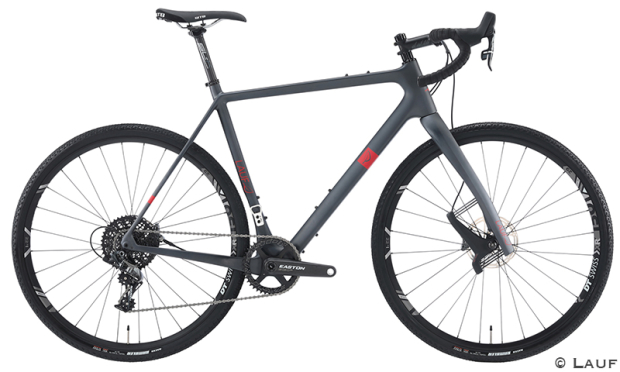
I've got two different gravel bikes. And I enjoy riding each of them. Each of these bikes has a distinct "feature," but what really separates them is their front end geometry. In each case, I'll reference the geometry of my size. To a certain extent, you can tweak how a bike handles by sizing up or down.
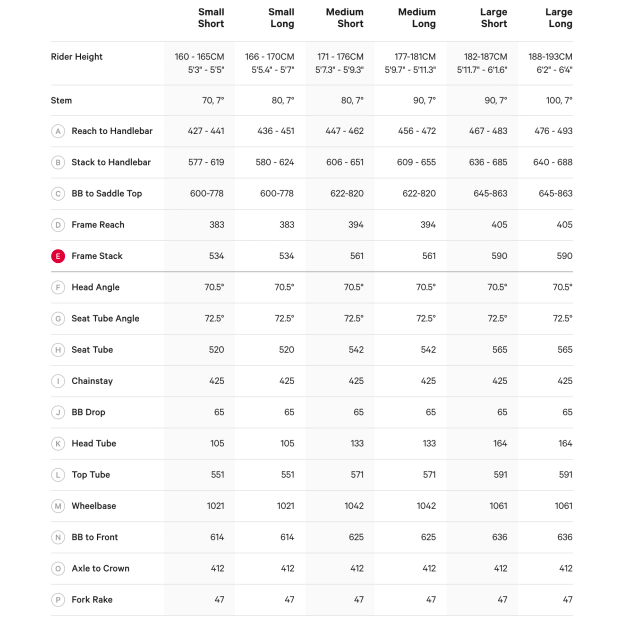
The Lauf True Grit. In size L. With a 70.5deg HTA and a fork rake of 47mm, this bike is the most "stable" of the bunch. This is basically a hard-tail 29er with drop bars. This is what I rode for Kanza, and I think it was the perfect bike for that course. The suspension fork and stable geometry are a boon over 206mi of rough – but mostly straight – roads.

The 3T Exploro in size L. With a 72.5deg HTA and a fork rake of 50mm in the L – for me – this is more of a road bike. If I wanted a dedicated gravel bike, I'd have gotten the XL. The reason here has to do with stem length. On a L, I run a 130mm stem, which is fairly long (though not overly so).
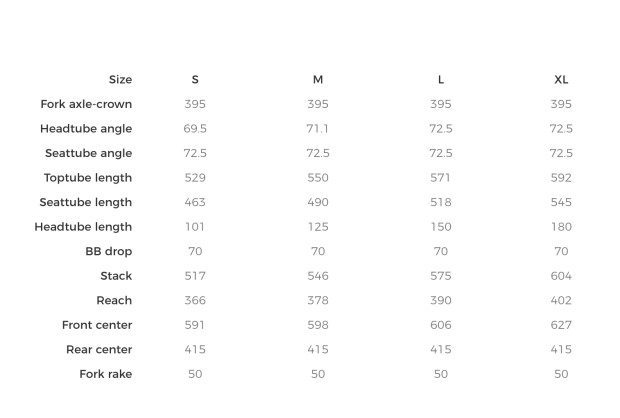
Stem length (and, now, with so many different reach options on handlebars, those as well) is important both because of how it impacts handling, and also because of weight distribution; assuming the same reach, a shorter stem means you'll have more weight on the rear wheel, which makes a big difference for gravel riding as you typically have to make serious compromises between off-road grip and on-road rolling resistance. But stem length and bar reach are also largely matters of fit and preference, and that's a rabbit hole that I don't really want to go down here.
In any case, as an all-around bike, the L Exploro is certainly the right choice for me, and it's the bike that I'd choose without hesitation for something like the Belgian Waffle Ride. I rode this bike at the recent Peloton Gravel MOB because it climbs like a rocket; but I don't like descending on it nearly as much as I like descending on the Lauf, and I am not sure if I made the "right" choice here given that the Gravel MOB has a very technical descent where I've lost huge chunks of time the past two years doing it. But the beefy BB and lack of suspension and the more "nimble" geometry make this bike an incredible climber, and I like to go uphill fast more than anything else, and the Gravel MOB race also has a lot of climbing. Decisions, decisions…
To be clear, this particular article is not meant to be a comprehensive review of each bike. That's coming. This is specific to the geometry of gravel bikes more generally, as there are a lot of great bikes – and a convergence on appropriate geometry – that I hope to help people understand before they throw a leg over them.
How The Geometry Translates On The Road & Trail
Bikes with a lot of front center and a lot of trail tend to want to go in a straight line and are really, really nice to descend on. Conversely, they are dogs to climb on, especially out of the saddle, and they struggle in terrain where you need to make very quick, short adjustments to your line. The reason has to do with weight distribution. The further out in front the front wheel is, the more weight is on the rear wheel. When you are descending, this keeps the front wheel from being overloaded and results in a more stable weight distribution where you are less likely to have the back end get loose on you or to have the front end stick.
But this same principle overloads the rear wheel when climbing and – especially if the bike is slower handling due to long trail – can make it really hard to find a good line when climbing. Plus the bike just "feels" off because the front wheel doesn't have enough weight on it and the back wheel has too much.
For gravel bike, given the impact of tire size, you have to "intuit" trail a bit from the head-tube angle and fork-rake. What's interesting is that as you add offset, you reduce trail, and speed up handling. So a fork with more rake/offset results in a quicker handling bike. This is often counterintuitive to experienced bike people, because – to hit target trail numbers – forks with large offsets (say 60mm+) usually are found on relatively slow handling bikes like touring bikes. But this is because those bikes typically have very slack head-tubes in order to give a long wheel base and to remove weight from the front wheel, which may be loaded down with panniers.
Comparing the Lauf True Grit and the 3T Exploro, the 3T has both more offset – 50mm vs 47mm – and a steeper head-tube angle – 72.5 vs. 70.5. What this means is that the 3T both has a lot less trail than the Lauf and also less front-center (606mm vs 636mm). The Lauf is a true joy to descend on. There are some very steep, very loose descents on the trails near my house, and I have no trouble descending these on the Lauf. I can be fairly lazy and still take them well. On the 3T, I have to be much more judicious about how I choose my line.
But in the opposite direction, going up those same trails, the 3T shines. It's nimble enough that I don't have to think 50m up the trail about where I want the front wheel to be. On the Lauf, when climbing, you have to be much more focused on your line, because the bike takes much longer to come around to where you want it to be. You can't make sudden moves – especially when climbing – on the Lauf. Well, you can, but nothing will happen. Steering the Lauf is like steering a yacht. It happens, but slowly. But this isn't a criticism. When you can barely see straight and the wind is whipping across the Kansas plains, it's very nice to be on a bike that wants to hold its line.
Caveats
The increased trail that results from larger tires is, in general, a good thing as far as taking a bike onto the dirt is concerned. But they aren't a universal good. Bigger tires don't just increase trail; the also increase bottom-bracket height. That same 20mm of increased tire size also pushes you 20mm up into the air. And this is where bike makers have to make a really definitive choice about whether they what sort of bike they want to build.
Bottom bracket drop is the vertical distance between the center of the hubs and the center of the BB. BB Drop is, therefore unaffected by tire size. Sort of. Practically, BB Drop is really the height of the bottom bracket above the ground. There are arguments for running relatively little BB Drop on a gravel bike; as tire size goes up, you get increased ground clearance. But ground clearance isn't the same sort of issue on a gravel bike as it is on a mountain bike; there's a reason you don't see gravel bikes with bash guards on the chainrings. Likewise, pedal clearance when cornering is also not much of an issue, because you can't cant the bike over as much in loose terrain. So the arguments in favor of a high BB pale in comparison to the center of mass arguments that indicate a lower BB. Dropping the BB brings you closer to the ground, and for gravel riding, that's generally a good thing. And, as with trail, small shifts in total center of mass are significant.
Specialized is one company that puts a lot of thought into BB Drop. The Diverge (their gravel bike) runs 85mm of BB Drop across the board. I think this is the "right" number. When you compare the Diverge to their cyclocross-specific Crux, you see a real difference, in how they approach to seemingly similar bike classes. And the BB Drop is particularly noticeable. The Crux's BB Drop varies from, 67-71mm from size 46 to 61. There are other differences – some of which I don't agree with (in particular the trail differences; I think the trail on the larger size Crux bikes to be excessive), but I think Specialized gets right the appropriate BB Drop for gravel vs 'cross.
Lauf, in my opinion, runs too high of a BB with only 65mm of drop, though it's mitigated by the fact that the True Grit is a generally very stable bike. The 3T runs an especially high BB in my opinion (even though it's marginally lower than the BB of the Lauf with 70mm of drop) because the 3T is a generally quick handling bike. But Gerard Vroomen seems to prefer high BBs – that's always been a hallmark of Cervelos, and I think he might argue that the 3T is low – relatively speaking. But I think 80mm of BB Drop would make it a better bike and give it a bit more stability without compromising handling.
The other concern with big tires is that they also increase in size backwards. Again, given some of the possible size differences in play here, toe overlap could become an issue with big tires on a bike that had no issues with skinny tires. Likewise, clearance on the down-tube can become as much of an issue as fork and chain-stay/seat-stay clearance on bikes with steeper head-tube angles as the tire increases in size back towards the frame. You might also run into issues with battery packs (Shimano Di2 on the frame; SRAM eTap on the front derailleur); I saw this first hand following a wheel swap at Dirty Kanza between a Force1 rider and an eTap rider. There are quite a few "oh, I didn't think of that…" things to be aware of when running bigger tires. Bigger is generally better, until it's not.
Concluding Thoughts
Neither bike's geometry is better or worse. And, interestingly, I think both bikes speak to their "provenance" with their geometry. Lauf is an Icelandic company. I spent about two weeks in Iceland last summer, and most of the roads – by which I mean roads for all vehicles as only a very small percentage of roads in Iceland are paved – are long, fairly-straight, and washboard rough. Most cars in Iceland fall into two vehicles – small hybrids (particularly plug-in vehicles given that electricity in Iceland is free because of the massive geothermal power generation) or trucks with balloon tires. In my experience, most people have both (or at least access to both). These washboard roads go a long way towards explaining the Lauf's suspension fork (something I'll cover in a future article on the Lauf itself) and also it's overall geometry. The Lauf was clearly designed for riding on Iceland's dirt roads. Now, this geometry lends itself to a lot of roads and trails in places other than Iceland, but the geometric decisions clearly display the biases and preferences of the company's founders.
Likewise, 3T is about as venerable an Italian brand as exists in the sport. Even under its new management team, headed by the Dutch-Canadian Gerard Vroomen who co-founded Ceverlo, the bias here is clearly more towards cyclocross-inspired geometry. The Exploro is geometrically-speaking, a cyclocross bike that takes bigger tires. No surprise here as Eastern Canada, Italy, and the Netherlands are all places where cyclocross bikes are as common – or even more common – than road bikes and where thoughts of riding off-road probably conjures up images of mud-soaked, technical 'cross courses. Again, the geometry here – nimble/twitchy – reflects an inherent cultural bias.
To me, this is one of the best features of both bikes. The terroir of each region and of each company shines through. These are bikes that, in both cases, the people making the bikes actually want to ride themselves. I like it when these sorts of geometric decisions shine through, because it's clear that the bikes reflect a real understanding of how geometry and terrain blend together. I contrast this with, especially, extra-small TT/tri-bikes for women, which are – generally speaking – designed to fit into CPSC-guidelines around toe-overlap and expedient decisions about wheel-size and, disappointingly, where I think it's entirely possible that no one at the company has ever actually ridden the bike that they are selling.
The explosion in popularity in gravel has resulted, I believe, in a renewed focus on bike geometry, something that is a universal good. If bikes were, for the past decade, overwhelmingly focused on material – on pushing the boundaries of how best to build a bike out of carbon fiber rather than simply trying to duplicate old methods for steel and aluminum with carbon, I think there is a now an appreciation for geometry – and, in particular, front-end geometry – that hasn't existed since builders were bending their own fork legs. Given the critical impact of front-end geometry on tri-bikes – bikes that, like gravel-bikes, need to be extremely concerned with excessive weight on the front wheel, this focus is welcome. Ironically, in spite of their vastly different application, good gravel bike geometry and good tri-bike geometry have a lot in common.


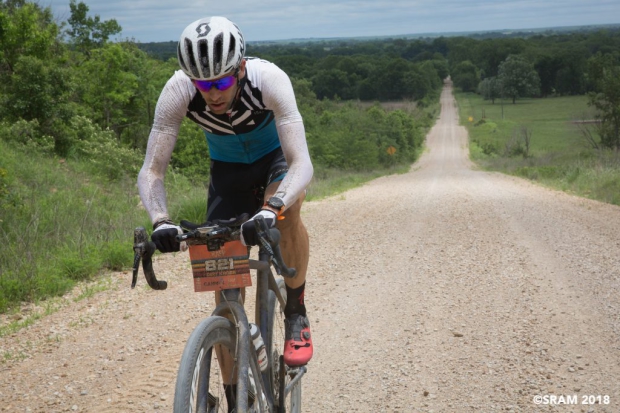
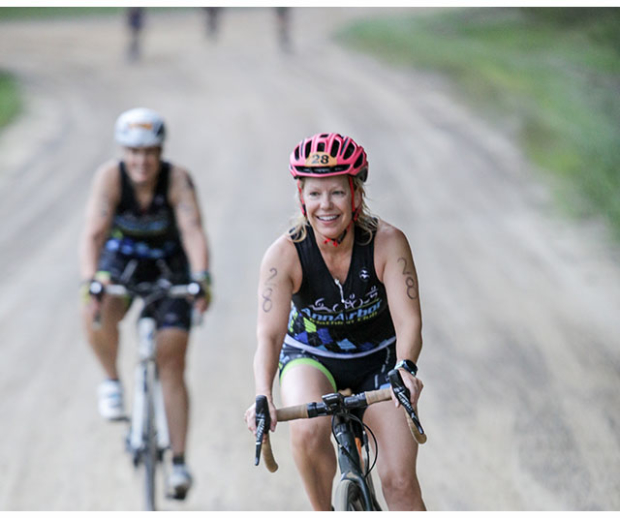
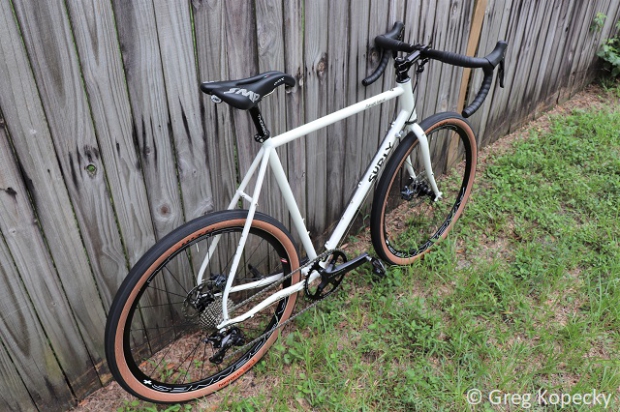
Start the discussion at slowtwitch.northend.network